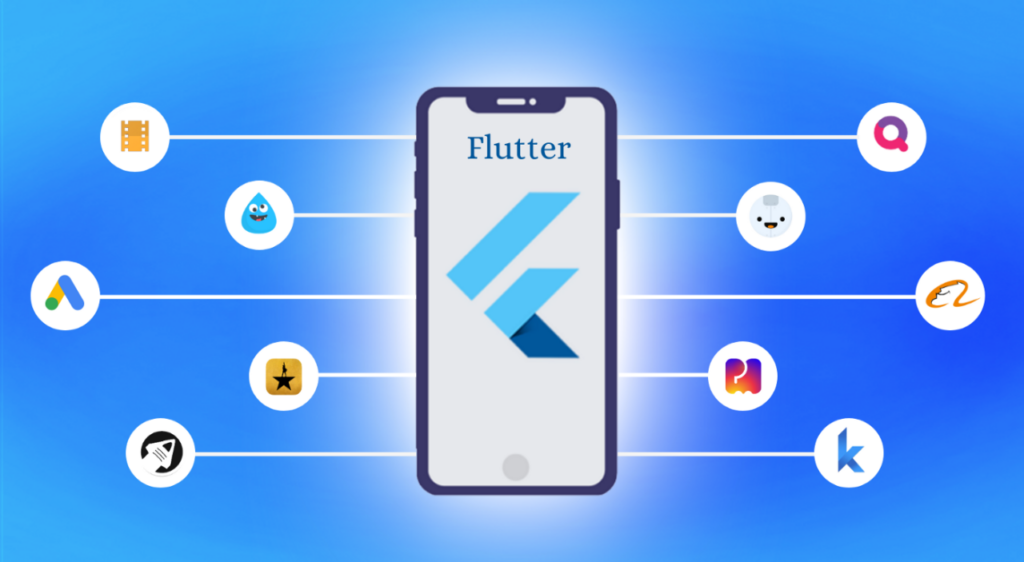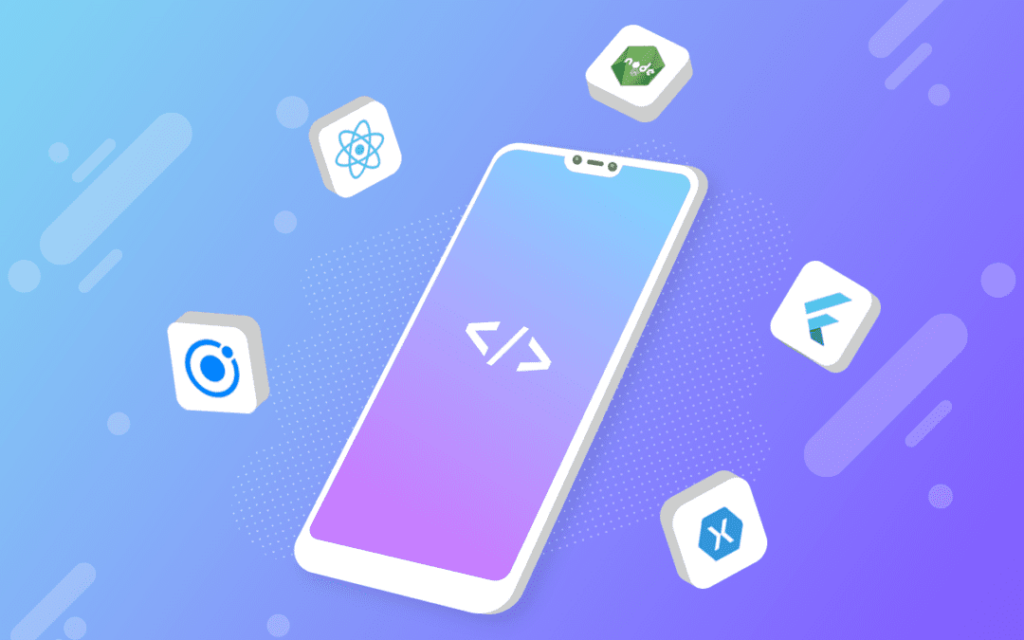Introduction
In today’s digital landscape, the demand for mobile applications is higher than ever. With the prevalence of multiple platforms such as iOS, Android, and web, businesses and developers face the challenge of reaching a broader audience while maximizing their resources. This is where cross-platform app development comes into play.
Cross-platform app development refers to the process of creating mobile applications that can run on multiple operating systems and platforms using a single codebase. It allows developers to write code once and deploy it across different platforms, saving time and effort.
This article will delve into the unique and technical aspects of cross-platform app development. It will explore the benefits of this approach, key considerations when developing cross-platform apps, relevant tools and technologies, challenges faced, best practices, and future trends in the field. By understanding these unique and technical elements, developers can make informed decisions and create high-quality apps for multiple platforms.

Benefits of Cross-Platform App Development
Cross-platform app development offers numerous advantages that make it an appealing choice for businesses and developers. Here are some key benefits:
A. Cost-effectiveness and time efficiency:
Single codebase: With cross-platform development, developers write code once and deploy it across multiple platforms, reducing development time and costs compared to building separate apps for each platform.
Shared resources: Cross-platform frameworks enable the reuse of code, libraries, and assets, further optimizing development efforts and reducing the need for duplicate work.
Faster time to market: By developing a single app for multiple platforms, businesses can launch their products simultaneously, gaining a competitive edge and reaching their target audience faster.
B. Wider audience reach and market penetration:
Multi-platform coverage: Cross-platform apps can target both iOS and Android users, allowing businesses to reach a broader audience and maximize their market potential.
Increased user acquisition: By catering to users on different platforms, businesses can attract a larger user base, leading to higher download rates, increased visibility, and potential revenue growth.
C. Consistent user experience across platforms:
Unified UI/UX: Cross-platform frameworks provide tools and libraries to maintain a consistent user interface (UI) and user experience (UX) across different platforms. This ensures brand consistency, familiar interactions, and a seamless user journey.
Feature parity: Cross-platform development allows businesses to deliver the same set of features and functionalities across all platforms, ensuring equal experiences for users regardless of their chosen device.
D. Simplified maintenance and updates:
Centralized codebase: With a single codebase, maintaining and updating the app becomes more efficient. Bug fixes, feature enhancements, and security updates can be implemented once and propagated to all platforms, saving time and effort.
Version control: Cross-platform development simplifies version control, as changes made to the codebase are applied universally, eliminating the need for platform-specific code branches.
E. Cost savings in the long run:
Lower development and maintenance costs: By sharing resources and utilizing cross-platform frameworks, businesses can reduce development and maintenance expenses, making it a cost-effective solution in the long run.
Streamlined team collaboration: With a unified codebase and development process, cross-platform app development promotes collaboration among developers, designers, and testers, resulting in better coordination and improved productivity.
Key Considerations for Cross-Platform App Development
Developing cross-platform apps requires careful consideration of various factors to ensure a successful and efficient development process. Here are some key considerations to keep in mind:
A. Platform compatibility and limitations:
Understanding differences in operating systems: Different platforms have unique operating system requirements, design guidelines, and performance characteristics. Developers must consider these differences when designing and implementing features to ensure optimal compatibility and user experience.
Adapting to varying screen sizes and resolutions: Cross-platform apps need to adapt to different screen sizes, aspect ratios, and resolutions across devices. Responsive design principles and adaptive layouts can help ensure consistent display and usability across platforms.
B. App performance and optimization:
Native vs. hybrid frameworks: Choosing the right development framework is crucial for achieving optimal app performance. Native frameworks offer better performance but may require platform-specific code, while hybrid frameworks offer code reuse but may have performance trade-offs.
Utilizing platform-specific features and APIs: Leveraging platform-specific features and APIs can enhance app functionality and performance. However, it’s important to handle these features gracefully for non-supported platforms and ensure fallback options are in place.
C. User interface and design:
Consistency across platforms while respecting platform conventions: Maintaining a consistent UI/UX across platforms helps build a unified brand experience. However, developers should also respect platform-specific design guidelines to ensure familiarity and usability for users.
Customization and flexibility for platform-specific UI/UX: While consistency is important, some platforms may have unique design elements or interactions. Providing platform-specific customization options can enhance the user experience and align with platform expectations.
D. Code reusability and maintainability:
Shared codebase and modular architecture: Maximizing code reuse through a shared codebase can significantly reduce development effort. Employing modular architecture and separating platform-specific code from shared code can improve maintainability and allow for easier updates.
Handling platform-specific adaptations and updates: While sharing code is beneficial, some platform-specific adaptations may be necessary. Managing platform-specific code efficiently and having clear strategies for handling updates and maintenance can streamline the development process.

Tools and Technologies for Cross-Platform App Development
When it comes to cross-platform app development, there are several tools and technologies available to streamline the development process and maximize code reuse. Here are some popular options:
A. Native development frameworks:
- React Native: A JavaScript framework developed by Facebook, React Native allows developers to build native-like apps using a single codebase. It provides access to platform-specific APIs and offers a rich ecosystem of community-created libraries and components.
- Xamarin: Owned by Microsoft, Xamarin enables developers to build cross-platform apps using C#. It provides access to native APIs and allows code sharing across iOS, Android, and Windows platforms, resulting in high-performance applications.
- Flutter: Developed by Google, Flutter is an open-source UI toolkit that uses the Dart programming language. It provides a rich set of pre-built widgets and offers a fast development cycle with hot reloading, delivering visually appealing and performant apps.
B. Hybrid development frameworks:
- PhoneGap (Apache Cordova): PhoneGap allows developers to build apps using HTML, CSS, and JavaScript. It wraps the app code in a native WebView, enabling it to run on multiple platforms. It provides access to native device capabilities through plugins.
- Ionic: Built on top of Angular, Ionic is a popular open-source framework for building hybrid mobile apps. It uses web technologies like HTML, CSS, and JavaScript and provides a library of UI components for creating visually appealing apps.
- Cordova: Cordova, an open-source platform powered by Apache, allows developers to build cross-platform apps using web technologies. It provides access to native device features through JavaScript APIs.
C. Progressive Web Apps (PWA):
Benefits of PWAs for cross-platform development: PWAs are web applications that can function as native-like apps. They offer benefits such as cross-platform compatibility, offline functionality, and the ability to be installed on a user’s home screen.
Technologies supporting PWAs: HTML5, CSS3, and JavaScript are the core technologies used in developing PWAs. Additionally, frameworks like Angular, React, and Vue.js can be utilized to streamline the development process.
These tools and technologies offer different approaches to cross-platform app development, catering to various programming languages and development preferences. It’s important to assess project requirements, consider factors like performance, community support, and learning curve, and choose the most suitable tool or framework accordingly.
It’s worth noting that the cross-platform landscape is constantly evolving, and new tools and frameworks may emerge. Staying up-to-date with the latest trends and advancements in cross-platform development can help developers make informed decisions and create efficient, high-quality apps for multiple platforms.
Best Practices for Cross-Platform App Development
Developing cross-platform apps requires adherence to certain best practices to ensure efficient development, maintainable codebase, and optimal user experience. Here are some key best practices to consider:
A. Code organization and architecture:
Separation of concerns and modular development: Implement a modular architecture that separates business logic from UI components and platform-specific code. This improves code maintainability, reusability, and facilitates easier testing and updates.
Design patterns and architectural frameworks: Utilize design patterns such as Model-View-ViewModel (MVVM) or Model-View-Controller (MVC) to structure your codebase. Additionally, architectural frameworks like Redux or MobX can help manage state and data flow efficiently.
B. Continuous integration and delivery (CI/CD):
Automated build and deployment processes: Set up automated workflows for building, testing, and deploying your app. Tools like Jenkins, CircleCI, or Bitrise can be used to streamline the CI/CD pipeline, ensuring consistent and reliable releases.
Version control and collaborative development: Use a version control system like Git to track changes, enable collaboration among team members, and simplify code merging and branching. Adopting a branching strategy, such as GitFlow, can help manage codebase versions effectively.
C. User feedback and analytics:
Collecting user data for iterative improvements: Integrate analytics tools like Google Analytics or Firebase Analytics to gather insights about user behavior, usage patterns, and performance. Use this data to inform future updates and enhancements.
Utilizing A/B testing: Conduct A/B testing to evaluate different features, UI variations, or user flows. This helps make data-driven decisions and optimize the app based on user preferences and engagement metrics.
D. Testing and quality assurance:
Device fragmentation and compatibility testing: Test your app on a variety of devices, screen sizes, and operating system versions to ensure consistent functionality and UI across platforms. Consider using cloud-based testing platforms like AWS Device Farm or BrowserStack to streamline testing efforts.
Utilizing cross-platform testing frameworks: Leverage frameworks like Appium or Xamarin.UITest to automate functional testing across multiple platforms. This helps identify and fix issues early in the development cycle.
E. Performance optimization:
Caching and preloading techniques: Implement caching mechanisms for frequently accessed data or assets to reduce network requests and improve app responsiveness. Preload essential content to minimize loading times and provide a seamless user experience.
Minimizing network requests: Optimize API usage and minimize unnecessary network calls. Combine multiple requests, utilize data compression techniques, and implement lazy loading where appropriate to reduce data usage and enhance performance.
F. Security considerations:
Secure data transmission: Ensure that sensitive data is transmitted securely over the network using encryption protocols (e.g., HTTPS) and best practices for data privacy and protection.
Secure storage and authentication: Implement secure storage mechanisms for user credentials, sensitive information, and user-generated content. Utilize secure authentication methods, such as OAuth or token-based authentication, to protect user data.
Conclusion
Cross-platform app development offers businesses and developers a compelling solution to reach a wider audience and maximize their resources. By leveraging a single codebase, businesses can efficiently target multiple platforms, reduce development costs, and accelerate time to market. Throughout the development process, considering key factors such as platform compatibility, app performance, user interface design, code reusability, and adhering to best practices is crucial for creating high-quality cross-platform apps.
Furthermore, the availability of various tools and technologies, including native frameworks like React Native, Xamarin, and Flutter, as well as hybrid frameworks like PhoneGap and Ionic, provides developers with a range of options to choose from based on their specific needs and preferences. Additionally, the emergence of Progressive Web Apps (PWAs) adds another avenue for cross-platform development, combining the benefits of web technologies with native-like app experiences.
By incorporating best practices such as efficient code organization, continuous integration and delivery, user feedback and analytics, thorough testing, performance optimization, and security considerations, developers can ensure the success and longevity of their cross-platform apps. It is important to stay updated with the evolving landscape of cross-platform development and embrace emerging trends and advancements to stay competitive in the market.
In conclusion, cross-platform app development empowers businesses to efficiently target multiple platforms, engage a wider audience, and achieve their app development goals effectively. By capitalizing on the benefits, adopting best practices, and leveraging appropriate tools and technologies, businesses can create successful cross-platform apps that deliver a consistent and optimal user experience across various platforms.














